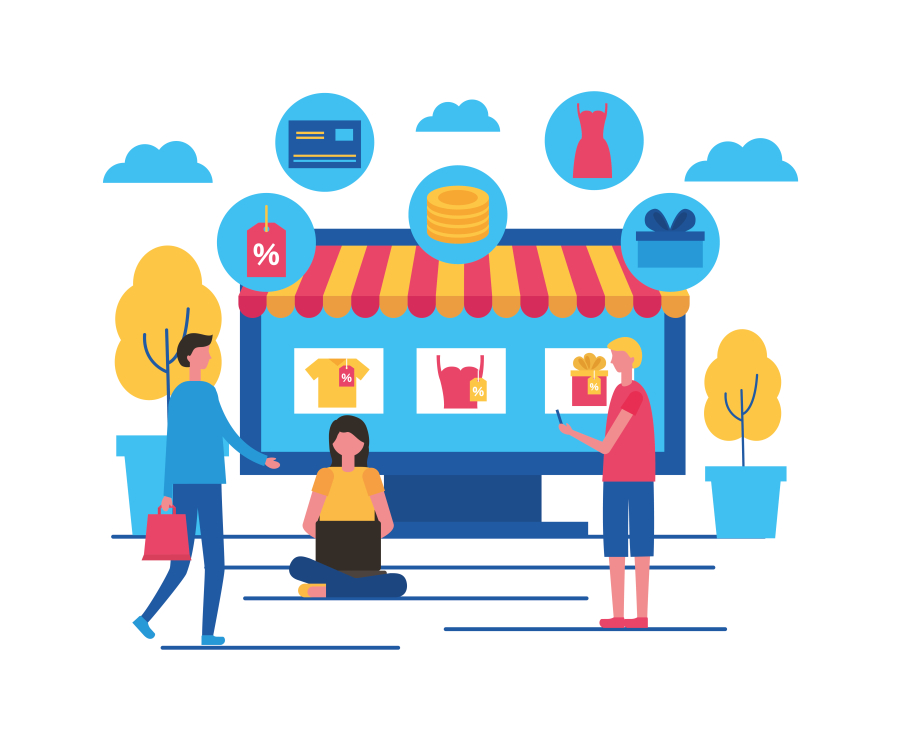How the Metaverse Will Impact Web Design
As technology continues to evolve, web design is no longer confined to static screens and flat interfaces. With the rise of the metaverse, the boundaries between physical and digital experiences are blurring, introducing a new era of immersive and interactive design. For freelance web designers, this evolution is more than a buzzword—it represents a fundamental shift in how websites will be experienced, developed, and delivered.
The metaverse is expected to be a massive digital ecosystem where users interact in real-time, three-dimensional environments. It merges virtual reality (VR), augmented reality (AR), blockchain, and social interaction into one interconnected space. At freelancerbridge, we aim to keep freelancers ahead of the curve. In this article, we’ll explore how the metaverse will reshape web design, what skills freelancers will need, and the key trends that are already shaping the future of digital experiences.
Long Description:
1. What Is the Metaverse?
The metaverse is a persistent, shared digital universe made possible by technologies like:
Virtual Reality (VR): Fully immersive 3D environments
Augmented Reality (AR): Overlaying digital objects on the real world
Blockchain & NFTs: Ownership and digital economy
AI & Avatars: Smart interactions and virtual identities
In the metaverse, users don’t just scroll — they explore. They navigate websites like virtual spaces, attend meetings in 3D environments, and interact with content in real-time.
2. Why Freelancers Need to Prepare Now
The rise of the metaverse means that traditional website layouts and flat UI elements will no longer be enough. Freelancers will need to shift toward spatial design thinking, interactivity, and immersive storytelling. Clients will increasingly demand web experiences that mimic real-life engagement, whether for eCommerce, branding, or education.
3. Key Metaverse Technologies Affecting Web Design
✅ Virtual Reality (VR)
Users can visit websites as 3D environments
Interfaces become spatial, not linear
Navigation is gesture-based or movement-based
Web design shift: From 2D wireframes to 3D architectural spaces
✅ Augmented Reality (AR)
Websites can integrate AR for product previews, interactive maps, or visual storytelling
Mobile-first experiences become AR-first
Web design shift: Designers must understand AR layering and context-aware content
✅ Blockchain & NFTs
Verification of digital assets directly on websites
NFT galleries, marketplaces, and ownership experiences embedded in web designs
Web design shift: Integration of crypto wallets, smart contract UIs, and decentralized assets
✅ Spatial Audio & Interaction
Websites can respond to movement, voice, and gestures
Audio cues guide users through immersive stories
Web design shift: Building websites that react to presence, not just clicks
4. How Website Architecture Will Change
In the metaverse, the concept of a "page" disappears. Instead, we design:
Portals: Entry points into digital environments
Hubs: Centralized virtual rooms for brands, events, or shops
Interactive objects: Elements users can touch, pick up, or interact with
Design thinking evolves from flat UI/UX into environmental and game design.
5. Design Principles in the Metaverse
📌 Immersive Experience First
Traditional principles like above-the-fold content or CTAs must adapt. Instead of scrolling, users move through environments.
Create spatial journeys, not just navigation menus
Use environment flow to guide conversions
📌 Avatars & Identity Integration
Users engage with sites using avatars
Design needs to accommodate personal presence, privacy, and interaction
Freelancer tip: Learn how to design for avatar-based UX
📌 Real-Time Collaboration
Metaverse sites will allow multiple users to be present simultaneously
Web designers need to think socially, not just functionally
Example: Virtual stores where shoppers can interact with each other
📌 Accessibility in 3D Spaces
Designing in 3D doesn’t mean accessibility can be ignored. Freelancers must ensure:
Color contrast and lighting support all users
Audio cues include subtitles and alternatives
Navigation is intuitive even for new users
6. Tools & Platforms Freelancers Should Learn
To design for the metaverse, freelancers should start exploring:
Unity & Unreal Engine – for creating 3D environments
Blender – 3D modeling software for objects and avatars
WebXR & A-Frame – JavaScript frameworks for web-based VR/AR
Three.js – For adding 3D elements to standard websites
Spatial.io, Decentraland, Mozilla Hubs – Platforms for hosting experiences
These tools allow freelancers to build immersive websites that function as virtual spaces.
7. Future Web Design Roles in the Metaverse
As the metaverse matures, new opportunities are emerging for web design freelancers:
🧭 3D Web Designer
Design virtual worlds, user interfaces, and experiences.
🛍️ Metaverse eCommerce Specialist
Build interactive virtual stores and product showcases.
🎨 NFT Display Designer
Create immersive galleries and portfolio spaces for artists or brands.
📢 Virtual Brand Architect
Design brand hubs, office spaces, and community lounges.
🧪 UX Researcher for VR/AR
Test and optimize how users navigate and experience 3D websites.
Freelancers who upskill early will be in high demand.
8. Challenges Freelancers Should Anticipate
❌ Technical Complexity
Metaverse design demands understanding of:
3D modeling
Game engines
Real-time rendering
Cross-device compatibility (VR headsets, mobile, desktop)
❌ High Entry Barrier
Learning tools like Unity or Unreal can be time-consuming, especially for traditional designers.
❌ Performance Optimization
3D-heavy websites must be optimized to avoid slow loading and poor UX.
❌ Client Education
Most clients are unfamiliar with metaverse design. Freelancers may need to educate clients on why immersive experiences are valuable.
9. How Freelancers Can Start Designing for the Metaverse
✅ Step 1: Learn 3D Basics
Start with Blender or SketchUp for modeling, then explore A-Frame or Three.js for integrating into websites.
✅ Step 2: Join Metaverse Design Communities
Explore communities like r/VRdev, Spatial.io, and Discord groups focused on XR.
✅ Step 3: Build a Metaverse Portfolio
Design sample 3D environments, virtual business cards, or interactive client showrooms.
✅ Step 4: Offer Pilot Packages
Introduce clients to simple immersive designs (like 3D product views or VR-ready portfolios) to test demand.
10. SEO and Web Design in the Metaverse
Will SEO still matter? Absolutely — but it will change.
Voice search and spatial indexing will dominate
Immersive content and engagement metrics will affect rankings
Semantic web and AI integration will power discoverability
Freelancers should prepare to optimize not just content, but user behavior within 3D environments.
Conclusion:
The metaverse is not a trend—it's a technological evolution that’s transforming how users interact with digital content. For freelance web designers, it opens the door to a completely new way of designing, building, and delivering web experiences. Instead of scrolls and clicks, the future is about movement, immersion, interaction, and presence.
Freelancers who embrace metaverse technologies early will not only stay ahead of the curve—they will define the curve. At freelancerbridge, we encourage every web designer to explore immersive design, learn 3D tools, and start preparing for a future where the web becomes an environment, not just a page.


 by Emily
by Emily




